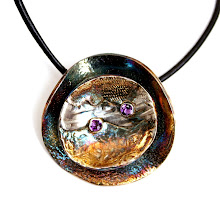Tahitian cultured pearls have been on the pearl market since sometime in the 70’s. They are what we think of as newcomers in the world of pearls. The majority of Tahitian cultured pearls come from the lagoons of Tuamotu Archipelago and the Gambier Islands. In the 1960’s the investigation started on how to culture the P. margaritifera in the French Polynesia. This is the type of oyster (a black lipped) that produces Tahitian pearls. They first had to produce a gem-quality and then they needed to establish a market to sell the pearls to. In the 1960’s and early 1970’s Tahitian pearls were not known outside of French Polynesia. A campaign to promote the pearls was successful but the farms faced the challenge to create quantities that were large enough to serve an international market. Tahitian cultured pearls are usually harvested in the spring and summer from May to November. Approximately 40% of the pearls that are implanted produce gem-quality cultured pearls. Only approximately 5% will be round and the top 1 to 2% will be of the finest quality. These pearls take approximately 22 to 26 months for their growth.
Tahitian cultured pearls are larger in size and seeing them as a size of 14 mm is common. The have colors like an eggplant purple, peacock green, metallic gray and some grayish blue. When they were first marketed they were marked as “black” because of their dark colors. There are three colors that are associated with Tahitian pearls. Peacock is a term for a color that is highly valued. It is a dark green gray to blue gray with rose to purple overtones. Aubergine which means eggplant in French is most often used to describe dark grayish purple. Pistachio is a term for yellowish green to greenish yellow Tahitian pearls.
Tahitian cultured pearls stand out because of their high value which is comparable to South Sea pearls but higher than other types of pearls. Their value is higher due to many factors including their larger size and unusual color. There are also fewer of them being produced than other types of pearls. A top quality Tahitian cultured pearl can cost in the thousands. If you had a pearl necklace with sizes that were graduated fro 10 to 14 mm it might retail for 40,000. Most Tahitian pearls measure between 8 mm and 14 mm.
Unlike Akoya pearls which are almost all spherical less than half of the Tahitian pearls are spherical. Tahitian pearls that have excellent luster are almost metallic. Surface quality can range from spotless which are extremely rare to heavily blemished. Because Tahitian pearls have a cultivation period of 2 years they usually have a 2 mm nacre all around the pearl. These pearls rarely have a visible nucleous or a chalkey appearance.
Tuesday, November 10, 2009
Subscribe to:
Post Comments (Atom)



No comments:
Post a Comment